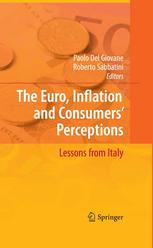

Most ebook files are in PDF format, so you can easily read them using various software such as Foxit Reader or directly on the Google Chrome browser.
Some ebook files are released by publishers in other formats such as .awz, .mobi, .epub, .fb2, etc. You may need to install specific software to read these formats on mobile/PC, such as Calibre.
Please read the tutorial at this link: https://ebookbell.com/faq
We offer FREE conversion to the popular formats you request; however, this may take some time. Therefore, right after payment, please email us, and we will try to provide the service as quickly as possible.
For some exceptional file formats or broken links (if any), please refrain from opening any disputes. Instead, email us first, and we will try to assist within a maximum of 6 hours.
EbookBell Team

4.3
68 reviewsOn 1 January 2002, euro banknotes and coins were introduced in twelve EU Member States. Three more countries joined in the following years, and over 300 million people now use the euro in their daily transactions. The currency changeover was a technical success. From the very start, however, the vast majority of euro area citizens held the single currency responsible for a sharp rise in prices and a subsequent decline in their personal economic fortunes.
This book puts forward convincing empirical evidence, primarily drawn from Italy’s experience, to establish whether the introduction of the euro has had a major impact on prices, and if not, why so many people believe it has. Its significance lies not only in the documentation of a historic event, but also and more importantly, in the lessons it provides, which concern the public’s understanding of inflation, the correct assessment of the effects of the single currency, and the need for appropriate measures when other countries adopt the euro.